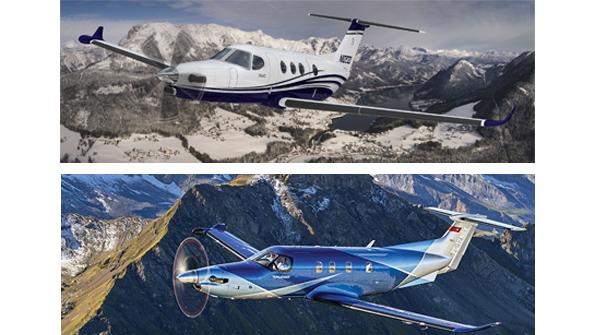
When designing an all-new aircraft, a fundamental consideration is: First, select an engine. But based on hard experience, a refinement to that adage might be: Preferably, select one that is certified.
Those choosing a high-potential propulsor still under development risk program delays, increased costs, frustration or worse. Examples are legion, going back to aviation’s earliest days, and are as current as the recent shelving of Dassault’s Falcon 5X and the Citation Hemisphere when the Safran Silvercrest failed to deliver as promised.
- GE’s Catalyst will be the first all-new turboprop engine in 50 years
- The PC-12 has a three-decade lead
Another example, but one quite likely to result in a happier outcome, is GE Aviation’s Catalyst. Announced five years ago as the first all-new centerline business aviation turboprop in half a century, it was Textron’s choice to power its Cessna Denali, a high-performance single unveiled at the same time.
The Denali was expected to fly in 2018. It did not. Nor did it in 2019 or 2020. Textron knows how to build turboprop aircraft, but the Denali needed an actual engine to take flight. And that was the problem.
Confronted by more stringent certification testing and requirements than had been in place five decades earlier and by disruptions from the global pandemic, the Catalyst has taken longer to develop than anticipated. In addition, most of that work is being conducted in Europe, where regulatory compliance is complex.
There is little doubt that the 1,300-shp engine—which promises excellent fuel burn, power output, weight reduction, time between overhauls (TBO), decreased complexity and features a full-authority digital engine control—will earn its certification.
GE finally delivered a “flightworthy” engine to Cessna in December 2020 and plans to add another this quarter. The engine-maker had hoped to finally begin flights in Berlin last quarter using a King Air 350 whose left-side Pratt & Whitney Canada PT6 was replaced with a Catalyst; it failed to do so, but GE says the initial flight “will be coming soon.”
The Denali’s most direct competition is the popular and heretofore unique Pilatus PC-12. Indeed, the Cessna has been described as a 105% photocopy of the latter—an observation that the Swiss plane-makers find flattering.
Introduced in 1994 and distinctive for its commodious cabin, large cargo door and rough-field capability, the PC-12’s reliance on a sole powerplant initially gave some potential buyers pause. To assuage any fear of single-engine failure, however, Pilatus chose Pratt’s PT6 to provide motive power.
First delivered in 1963, the PT6 is the most popular and proven turboprop engine extant, with over 51,000 delivered. Its reliability silenced most skeptics. In 2001, Pilatus celebrated delivery of the 300th PC-12 . . . and just kept going, its modest-sized factory in Stans averaging roughly 80+ new units annually.
The Denali was unveiled at the Experimental Aircraft Association’s AirVenture in 2016 with an introductory price about $300,000 less than a PC-12. Nevertheless, Pilatus delivered its 1,800th unit this past April.
Announced three years after the Denali, the NGX, the PC-12’s third evolution, features electronic prop and engine controls, integrated autothrottle, increased TBO, larger cabin windows and reduced noise. Typically equipped, its price is about $5.4 million. Such upgrades, Pilatus says, help motivate its famously loyal owners to trade up.
An open question: When certificated Denalis finally start rolling from their production hangar in Wichita, will they expand or simply divide the market?
Rolland “Rollie” Vincent, creator/director of JetNet IQ, notes that a newcomer might be more flexible on pricing than Pilatus, and that could attract big operators such as FedEx, which already has a fleet of Caravans and is launch customer for the Cessna SkyCourier twin. Cessna’s large customer base could translate to sales, particularly among those favoring U.S.-made products.
But, Vincent adds, the Catalyst has yet to prove itself, and considering the PC-12’s continuing success, excellent safety record and high residual value, its overseers “aren’t losing any sleep over Denali” when bedding down in the shadow of Mount Pilatus, he says.
Some of that sweet slumber is thanks to putting first things first.


